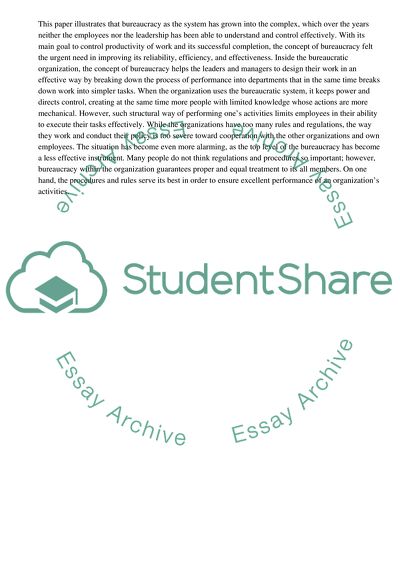Cite this document
(“The Bureaucracy as an Effective System of Organization Essay - 2”, n.d.)
The Bureaucracy as an Effective System of Organization Essay - 2. Retrieved from https://studentshare.org/business/1654674-critically-evaluate-the-concept-of-bureaucracy-as-an-effective-system-of-organization
The Bureaucracy as an Effective System of Organization Essay - 2. Retrieved from https://studentshare.org/business/1654674-critically-evaluate-the-concept-of-bureaucracy-as-an-effective-system-of-organization
(The Bureaucracy As an Effective System of Organization Essay - 2)
The Bureaucracy As an Effective System of Organization Essay - 2. https://studentshare.org/business/1654674-critically-evaluate-the-concept-of-bureaucracy-as-an-effective-system-of-organization.
The Bureaucracy As an Effective System of Organization Essay - 2. https://studentshare.org/business/1654674-critically-evaluate-the-concept-of-bureaucracy-as-an-effective-system-of-organization.
“The Bureaucracy As an Effective System of Organization Essay - 2”, n.d. https://studentshare.org/business/1654674-critically-evaluate-the-concept-of-bureaucracy-as-an-effective-system-of-organization.


